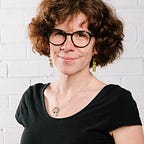Social imagination practice — approaches, practices, and resources
Together with the City of Melbourne and Hinterland, the Centre for Public Impact Australia and Aotearoa New Zealand (CPI ANZ) is experimenting with how social imagination could bring a sense of civic agency and possibility to the climate crisis. So far, we’ve shared how this project came to be, how we approached the recruitment process, and how we approached evaluation.
The abstract nature of social imagination work is challenging, so we wondered how others in this emerging field were helping people understand these ideas. In this blog, we share examples we used or were inspired by to help others looking to work on social imagination.
Where did we begin?
We began with ideas from sociology and the concept of sociological imagination, where people start to notice and critique the social context that shapes our individual and collective decision-making.
From this standpoint of seeing and knowing, we identified some collective values for society that we truly believed in. We drew on art, literature, and design to bring these to life and translate them into action. Here, we present the practices that contributed to world-building and those that built the “another possible”.
World-building
Values
Surfacing and working with values was one of the most important parts of our approach to social imagination. As Systems Thinking pioneer Donella Meadows said, values and paradigms “are the sources of systems”. They are one of the most challenging but most impactful places to intervene.
To identify our values, we drew on the work of social researcher Brene Brown, who created a list of values to identify with and a practice to narrow down to a few key values. Then, we discussed what the values of Southbank might be and how they could be enacted in future decisions and behaviours.
We also used the tools of world-building from art and literature to make these values tangible and explicit and spent time imagining what a world based on those values might feel like to live in.
Literature and creativity
Literature has a rich discipline of world-building, and writers traditionally divide this into two types: top-down (world and context) or bottom-up (character and story). To better engage with world-building, we brought in a poet and writer to share insights and lead the group in exercises to unleash their creativity.
Our journeys
Throughout the workshops, we explored the participants’ own experiences of Southbank. This included making metaphorical maps of the ups and downs of past experiences, interviewing each other about their stories, and adding layers of meaning to a giant shared map. Participants added places that were meaningful to them, such as favourite spots, best food options, and their homes.
Scavenger hunt
Through a scavenger hunt, we encouraged participants to examine the values that underpin how Southbank is currently constructed. Using prompts, they were invited to see their community differently, looking for social, physical, and cultural infrastructure that reflects its current values.
Future maps
Scenes is a tool for creating storyboards quickly, collaboratively, and iteratively. We used it to make concrete forms of the future we described, focusing on values and drawing out consequences. This resulted in built realities 5, 10, 50, or 100 years in the future that represented a collectively imagined alternative future.
Building “another possible”
At the heart of this project is the belief that, in the words of Colombian-American anthropologist Arturo Escobar, “another possible is possible.” Through these workshops, we supported participants in broadening their understanding of what has been possible in other places and at different times, using examples from around the world and exercises to test and expand their sense of agency and civic action.
Trojan mice
An essential part of imagining different worlds is shifting from a desire to control outcomes to developing a sense of agency to experiment within system(s).
Enter Trojan Mice: small experiments that are safe to fail and designed for learning. This creates a sense of permission and opportunity to learn from the resulting shifts and impacts. Trojan mice offer firsthand experiences of the other ‘possible possibles’ that are opened up by a small, creative idea, put into motion and enacted.
We asked participants to design their trojan mice and consider what might happen if they did it. How would they know if their actions created change? Planning these experiments can create horizontal accountability and increase the likelihood that they will be attempted.
Stories real or imagined
We devised a game in which examples from around the world are presented, and participants guess whether they are real or imagined.
This enabled us to discuss the realities of creating something that sounded impossible and broaden our expectations of what might be possible.
Resources
Many people are working on social imagination; creating space for different ways of thinking, knowing, and being that affect our actions and decisions, and encouraging people to imagine the kind of society that could face the challenges of our time.
- This Miro from the excellent people at Canopy is full of practices and prompts. Canopy’s social imagination compass also contains definitions of key concepts and practices.
- Narrotopias is “a collaborative and open programme to organize, on a global scale, a collective response to the recurring call for ‘new narratives’.” Their Collective Creative Practices for Transformation is a treasure stove of practices for imagining new narratives together.
- Seeding futures for wellbeing from the Griffiths Centre for Systems Innovation is a collective imagination starter pack created in response to The Hon. Dr Jim Chalmers MP’s essay for The Monthly in February 2023.
- Liberating structures is a collection of creative exercises to get people thinking differently. Some are very immersive or embodied; these are best for imagination practice.
